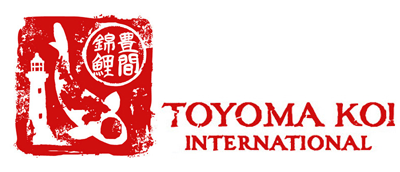Sustainably Sourced
As always, to appreciate Nishikigoi ("Koi"), one needs to understand that the essential part of breeding is the process of selection, Culling. Some time ago, a breeder pointed out that good Koi costs more because breeders must invest more in the parent fish, the facilities to house them, grow in mud ponds, medicate, feed, and even more to transport. It has been said often among breeders, "that there are good fish and cheap fish. But there are no good cheap fish."
Most Koi collectors begin with the notion after seeing a stunning photo at a show, and they think they can achieve the same results as the photo when purchasing a small fish at a local store or Koi outlet.

Most Koi collectors begin with the notion after seeing a stunning photo at a show, and they think they can achieve the same results as the photo when purchasing a small fish at a local store or Koi outlet.
The anticipation and excitement are not much different from when a rice farmer of Niigata's Yamakoshi area 400 years ago caught a glimpse of something pretty and unique swimming in a rice paddy. These were the first mutations appearing in their rice ponds, and they began isolating to breed into something more than just food fish to supplement their diet. Raising them with the same hope and enthusiasm that these fish would become something beautiful and unique is unlike hobbyists when they make an initial observation. However, there are a few essential and profound differences.

In reality, 200 years of experience and history have tempered the expectations of the people of this harsh, isolated mountainous area who were uniquely suited by geography, temperament, and character for this type of survival. Breeders are not capable of sustaining themselves if they sell their best fish when they are small. It is impossible to expect a good breeder to sell a six (6) inch fish for a fraction of what they could get for it after fully grown.Years ago, while on a buying trip, I was attempting to purchase a smaller, better quality koi held in reserve or as the Japanese refer to as "tategoi". Most beginners don't realize that the average number of fry hatched from spawn is between 50,000 to 75,000. Because of the vast genetic pool for Koi, approximately 95% don't live past the first tosai (1yr old) are auctioned. Also, most fish are males, as they can extract the brighter colors first, though Females are more valuable but slower to develop.

The remaining five percent are sold later in two or three years after being harvested from mud grow-out ponds.The average breeder ends up with 250 good fish from the original number of 50,000, including losses from disease or accidents. Most breeders consider 250 fish to be a bumper crop; that is why they have 5 to 10 breeding pairs, consisting of 1 female with 2 and 3 males, including reserves if something happens to the primary breeders. This large investment in time, equipment, real estate, and the land is not cheap in Japan.
